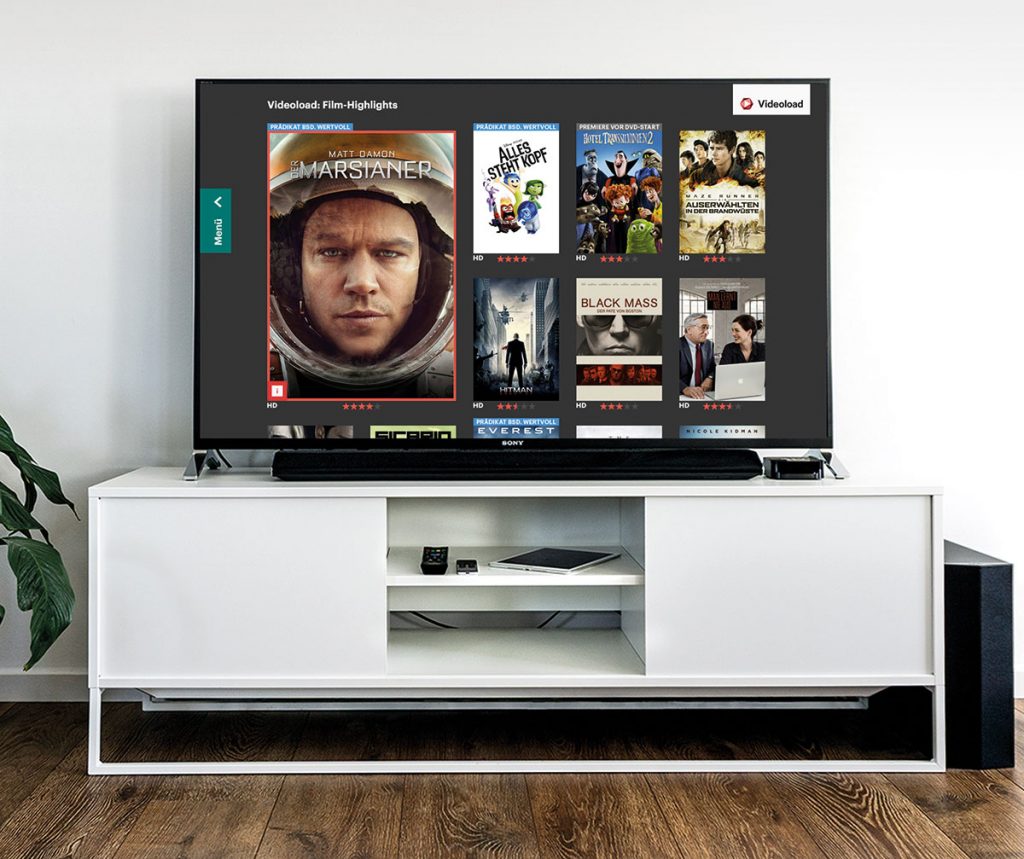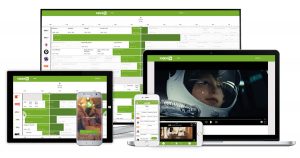
After more than 40 years of operation, DTVE is closing its doors and our website will no longer be updated daily. Thank you for all of your support.
Experience counts
 Keeping audiences engaged is key to any successful video service, but how are traditional content providers adapting to today’s market? Anna Tobin reports.
Keeping audiences engaged is key to any successful video service, but how are traditional content providers adapting to today’s market? Anna Tobin reports.
With the exception of live reality shows and major sporting events, mass audience appointment TV is an experience few of our children may remember. In a matter of years, streaming services such as Netflix and Amazon Prime have rapidly encroached on the space that traditional linear broadcasters have owned for decades. These streamers have taken eyeballs away from trusted local and national broadcast TV schedules, and it’s not purely due to the freedom offered by anytime, anywhere viewing. The recipe for their success is the creation of an engaging user experience. But what are the key ingredients for this and how can traditional content providers compete?
Crucially the SVOD giants notch up screen time without the audience realising how hard they are trying to keep them engaged. “The consumer experience or journey to the content they love should be as unobtrusive as possible,” says Anthony Smith-Chaigneau, senior director of product marketing at Nagra. “Easy, intuitive and fast with a consistent journey are equally important elements as people consume media on a plethora of different devices throughout their day. Embracing data for deeper consumer insight and a journey to better personalisation with the notion or feeling that all the content they love is accessible in one place will make a holistic, engaging TV-user experience.”
A seamless UX that allows the viewer to aggregate and access all their content from whichever device they are using, should also be clever enough to anticipate the user’s needs and this is where the latest technology comes in.
“This type of interface relies on new technologies like hyper-personalised recommendations and the power of voice as an input method to rise above the experience of legacy systems,” says Charles Dawes, senior director of international marketing at TiVo.
Broadcasters need to adapt the way that they interact with their audiences too, claims Neil Berry, chief revenue officer at Airbeem. “One thing TV does not do well, largely due to most of them relying on interaction via remote control, is complex navigation. As such, menus and layouts need to be clean and easily accessible, getting users to content in as few remote presses as possible,” he explains. “Similarly, the large amount of screen real estate means that dynamic, interesting imagery should be used to create a visually interesting UI. This had been a challenge historically, due to many smart TVs not having the hardware capability to show off a lot of visually stimulating imagery within a reasonable amount of time, but thanks to technological advances in TV set design, there is no reason why TV UIs shouldn’t aim to create the most visually compelling experiences available.”
The TV remote was once a symbol of power both within the home and back at TV companies’ headquarters. Whoever had control of it had ultimate control of viewing. This is no longer the case, says Dawes at TiVo.
“TV operators have for many years had control of the remote – their ‘brand in the hand’ – for the whole viewing session. However, as new entrants have come to market, and most importantly have been easy to access on the best screen in the house – either directly through a smart TV or via a cheap streaming adapter – this position has been challenged. Once a user has strayed from your service it’s hard to get them back,” he explains.
“Therefore, having a user experience, like TiVo Experience 4, that can seamlessly integrate content from multiple sources becomes important for the operator in the retention battle.
Having this kind of experience keeps the user within the pay TV world, allowing them to understand the value the service brings and ensure they are able to find what they want to watch at the time they want to watch it.”
It also has to be remembered that there are now several distinct audiences for different content within a single household. In recognition of this, Ron Downey, CEO of Massive, says that the TV user experience needs to be optimised to different viewers, rather that treating the audience as one. “If a viewer isn’t watching TV with others, why should they be offered the same viewing experience, content and promotions as everyone else?” he says. “Making this a reality is a bit more complicated than it sounds though. It depends on bringing three different areas together: the platform, the data, and the UI. Hitting this trifecta of video delivery is what’s needed to offer a tailored user experience that can cater to different subsets of the audience and meet different tastes and preferences. It’s a tried and tested route to make any pay TV or OTT service ‘sticky’, which naturally increases ARPU and reduces churn.”
The decline of exclusivity
Exclusive content has always been the USP that linear providers have come to rely on, but all-rights deals are declining in importance now that so many TV platforms have added third-party services, including in some cases their old rival Netflix. Consequently, they’ve had to find new selling points and Smith-Chaigneau at Nagra reiterates that what will become increasingly important is being able to step seamlessly between different user interfaces.
“As it stands in the OTT landscape, consumers are having to step in and out of different interfaces, through apps on different devices. This is not how content consumption is best served to the consumer,” he says. “A non-siloed approach that provides consumers with access to all content in one place with a global and unified search capability that makes for a seamless experience is what should be delivered.”
Linear broadcasters’ main advantage over their OTT counterparts is that they have full control of their signal. Content may not be as exclusive as it once was, but the quality and desirability of that content can differentiate one pay TV operator from another, points out Håkan Tranvik, co-founder of Magine.
“Content is still king and even though you could say exclusive content deals have a declining value for pay TV platforms, it is still quality content that a consumer pays for and it is important to have prime content available in the service – sports, TVOD, latest TV series whether it is in own packaging or from a third-party service.
“A reliable video signal, whether it is SD, HD or 4K, is also part of a general user experience, and from that point of view the pay TV platforms still have an advantage. OTT services can seldom fully control their signal end-to-end as they need to rely on the broadband delivery from another party.”
Quality of service is what sets linear operators apart from OTT providers, agrees Isla Sutherland, head of product at Freesat. “A key differentiator for us is the amazing reliability of satellite,” she says. “There’s a good level of tolerance around the on-demand viewing for content buffering, but when streaming live TV over IP introduces a few seconds lag, moments such as the penalty shoot outs at the FIFA World Cup and hearing neighbours celebrate a few seconds before you, have shown us that ‘not quite live’ experience isn’t always good enough.”
Ease of content discovery is another way that TV operators can differentiate themselves from the competition. If the EPG allows the viewer to clearly see both the operator’s content and third-party content, viewers will be less likely to look elsewhere. Creating a consistent user experience, however, is complicated by the fact that many people in a single household consume TV content from a single entry point on many devices.
“Creating a consistent user experience that can deliver ‘multiple access points’ e.g. via a simple menu, an advanced EPG, app store or recommendations portal and other journeys to content like voice search, caters for the spectrum of tastes and age groups that want to use the TV ‘their way’. Allowing for multiple journeys means users get the feeling that the experience is personally designed for them,” says Smith-Chaigneau at Nagra.
With competition for audiences now so fierce, it’s tempting to want to constantly tinker with your user experience. However, ‘if it’s not broke don’t try to fix it’ is a valuable rule to keep in mind too says Sutherland at Freesat. “While we’ll always want to take advantage of new trends and technologies, being innovative for the sake of it is not going to make a great TV user experience. Some parts of the UX are almost best left alone. For example, a TV guide [EPG] that has worked well for decades. Even though we now have the ability to implement image-rich navigation, this is probably best left for on-demand box sets and movies, rather than live TV.”
UI’s impact on marketing
By the time anyone is using a TV operator’s service, they’re normally a paid up subscriber, but that doesn’t mean that the marketing team has done its job and can move on to the next potential customer. “While it’s by no means the lead part of any strategy, the UX of a service does play a prominent role in marketing a service, given how it is the way that potential customers will first perceive the service,” says Berry at Airbeem.
“It serves as a representation for the brand, and it becomes one of the most powerful pieces of marketing a service has. It doesn’t matter how many slogans are deployed or however much is written about a service, users will make their judgement based on what they see of it way before they read and digest any text.”
If you get the user experience wrong, churn will rise and the poor customer service will become a talking point – not just through word of mouth, but through social media where it could easily go viral. Bundling OTT content with regular linear content can also be used as a selling point by marketeers, who can demonstrate to the user the benefits of having all your content accessible from one central point. Crucially, linear TV operators need to be flexible so that marketeers can implement new user-experience strategies quickly.
“Newer user experience and content management platforms make it possible for small teams of schedulers and marketers to test, adapt, and evolve the front-end without needing to involve the engineering department at all,” says Downey at Massive.
“It’s a way to redesign the UX, introduce new content layouts, rebrand the service, and even completely flip the business model in response to changing demands. Marketers can also use platforms like this to push promotional up-sell campaigns to specific audience segments without needing to update the service via the set-top box or connected device,” he says.
“Underpinning all of this is a need to tap into usage data from subscribers. This supercharges personalisation efforts, making it possible to roll out real-time UX alterations based on what the audience wants to see. It’s an approach that can also be used for identifying a segment of users that are likely to churn and tailoring promotions to prevent this, or increasing customer loyalty through more targeted content offerings.”
What now for legacy boxes?
Many established TV operators have numerous legacy set-top-boxes deployed across their subscriber bases that don’t have the capabilities of more advanced devices – a handicap in this competitive market.
“Tech development moves fast and it’s not easy to stay competitive with old installed bases of legacy set-top-boxes. And, it is hard to create a comparable seamless media experience for set-top-boxes and TV-everywhere devices in parallel,” says Tranvik at Magine “Magine Pro’s experience from our pay TV operator partners is that the best insurance for the future is to build everything in the same framework for both IPTV boxes – with Android TV – and mobile devices. Then you have the ability to maintain feature parity on different devices and platforms and rollout of features would be cross device and platform, meaning all features will look and feel the same, regardless if it is a set-top-box or other devices.”
If legacy boxes are up to date enough to work with cloud-based software, they will also be in a better position to compete with other operators, says Smith-Chaigneau at Nagra.
“Many of today’s services are delivered in the cloud and are server-side bound. We have taken the PVR out of the STB and moved to nPVR. Other advanced services, such as catch-up, start-over and playback trick-modes are all now server-side based. The embedded software specialists once worked hard to ensure that low-power set-tops with little memory were able to function well. They created efficient software to allow for service overhead in the devices, but it was always a challenge for resources. However, the heavy-lifting that a set-top used to have to do is no longer the case, which makes many legacy in-the-field boxes able to be used for more advanced services.”
Investing in advanced operator-controlled set-top-boxes should give operators more control over their Quality of Service and Quality of Experience and increase the longevity of the box, so it could pay off in the long term. Combined with a more complex remote control, a managed STB will provide much more functionality than a simple OTT device. Some operators are using the introduction of 4K to upgrade their whole service, points out Dawes at TiVo, and some are even letting customers use their own devices.
“Many operators have recently or are going through deployments of 4K television so they have the opportunity to roll out new hardware SKUs,” he says, referring to Stock Keeping Units – the serial numbers that uniquely identify a product. “Some have chosen to remain with a more expensive box, but many are looking to take on the OTT players at their own game and either deploy cheaper hardware using new platforms like Android TV or moving to a model where the customer can bring their own device.”
Get the user experience right and viewers will be automatically loyal to their box and the TV operator’s service and one thing that viewers like about their box is its record function.
“The ability to record live TV has sat with traditional set-top-boxes and this functionality continues to resonate with users. Users want to record more programmes at once and to watch them back on any device, says Sutherland at Freesat. “Amazon’s Frank DVR could potentially present a threat to this, though details on the exact experience are limited at this stage.
And let’s not forget the household without super-fast internet. This may sound a bit conservative, but all we need to do is wait for the internet to go down or find ourselves in an area with limited internet access or speed and we quickly realise the value of live TV,” she says. “Yes, the reliability of broadband is increasing, but we’d be kidding ourselves if we said it was as reliable as satellite. This is simply something OTT players cannot offer at this stage.”
Control the signal, provide the right content and make it easy to access anytime anywhere and ‘traditional’ TV providers should always be able to trump OTT. If they slip up on any one of these they will find their viewers looking elsewhere.




